 |
 |
 |
| |
Amino Acid Changes in gp41 of HIV-1 Associated with Coreceptor Tropism
|
| |
| |
Reported by Jules Levin
XVIII International HIV Drug Resistance Workshop
Ft Myers Florida June 9-13, 2009
E Stawiski1, W Huang1, JM Whitcomb1, CJ Petropoulos1, E Coakley*1
1Monogram Biosciences, South San Francisco USA.
BACKGROUND:
To date, most efforts to define the genetic determinants of co-receptor tropism (CRT) have focused on amino acid changes within the V3 region of HIV-1
However, changes outside of V3 have also been reported to impact CRT,
including at least one substitution within the gp41 region1
Changes in gp41 have also been linked to CCR5 antagonist resistance2.
Here we describe additional mutations in gp41 associated with CRT
METHODS:
The gp41 sequences evaluated were generated for quality control purposes
from samples submitted for routine testing by Trofile, a CLIA validated cell-based
recombinant virus assay.
Subtype B samples (as determined by the HyPhy SCUEAL package) were
selected that contained a minimal spanning sequence starting at the
beginning of the HR1 region and ending in the inter-cytoplasmic region of gp41.
We selected 6,453 commercial samples that had been run with the original
Trofile assay, had gp41 sequence data and were determined to be subtype B
Co-receptor tropism was assigned as R5 (57%), DM (39%) or X4 (4%).
For clarity, sequences with mixtures at key codons were excluded.
Fisher's Exact Test was used to define amino acid changes (relative to HXB2) which were associated with tropism and p-values were corrected for multiple
testing using the Benjamini-Hochberg method.
RESULTS:
Forty eight amino acid changes in gp41 were identified as being associated with tropism (Table 1). Although very uncommon the changes A30T (1.3%) and L34M (2%) were both strongly associated with CXCR4 use
The relative positions of the observed genotypic correlates within gp41 (HXB2) are shown in Figure 2
DM samples with A30T or L34M were associated with higher infectivity in
CXCR4 cells and lower infectivity in CCR5 cells (Figure 3)
Samples with L34M also demonstrated relatively reduced enfuvirtide susceptibility (Figure 4)
Phylogenetic analysis of gp41 nucleotide sequences by co-receptor
tropism with and without A30T or L34M is shown in Figure 5
AUTHOR CONCLUSIONS:
Multiple amino acid changes in gp41 were observed to be associated with CXCR4 and/or CCR5 use
These findings support previous observations that determinants of tropism may reside outside of V3
Further studies will be needed to confirm the degree to which these gp41 mutations contribute directly to co-receptor use
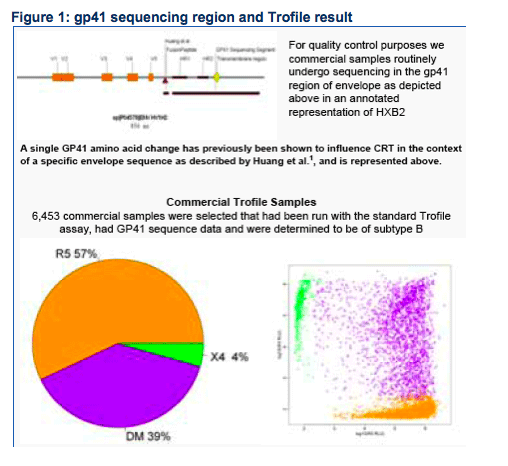
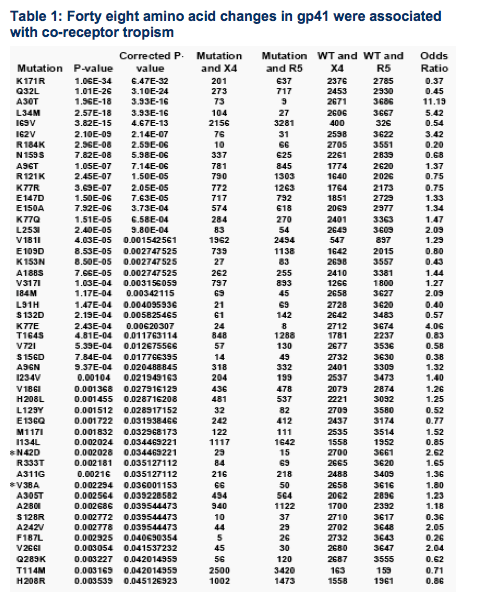
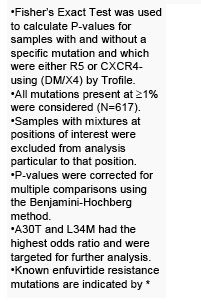
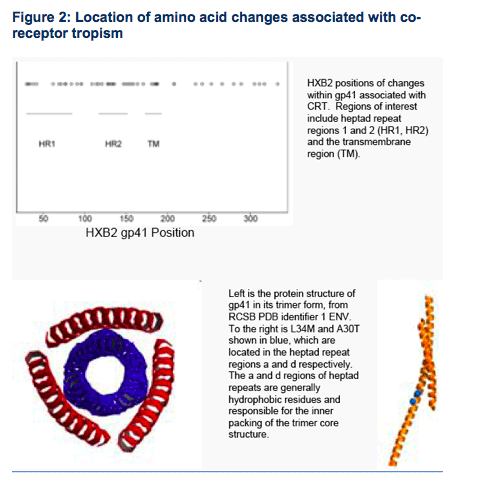
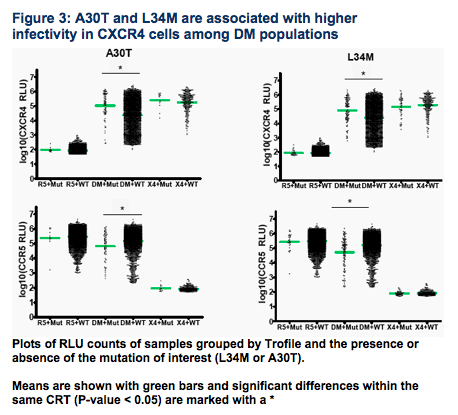
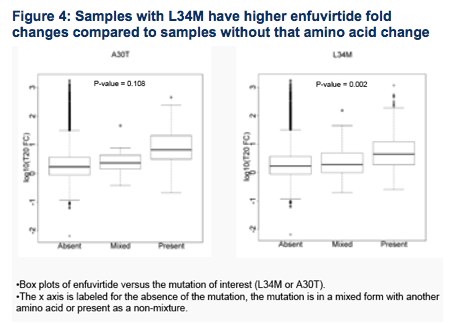
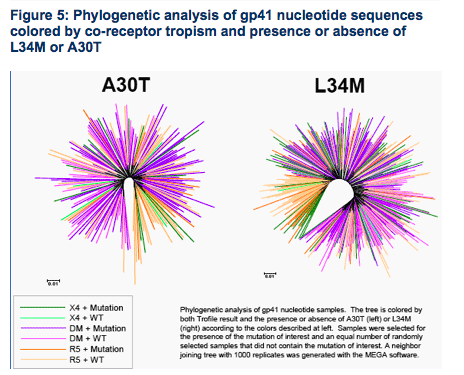
REFERENCES
1. Coreceptor tropism can be influenced by amino acid substitutions in the gp41 transmembrane subunit of human immunodeficiency virus type 1 envelope protein. J Virol. 2008 Jun;82(11):5584-93.
2. Resistance to CCR5 inhibitors caused by sequence changes in the fusion peptide of HIV-1 gp41. PNAS 2009 Mar; [Epub ahead of print]
|
| |
|
 |
 |
|
|